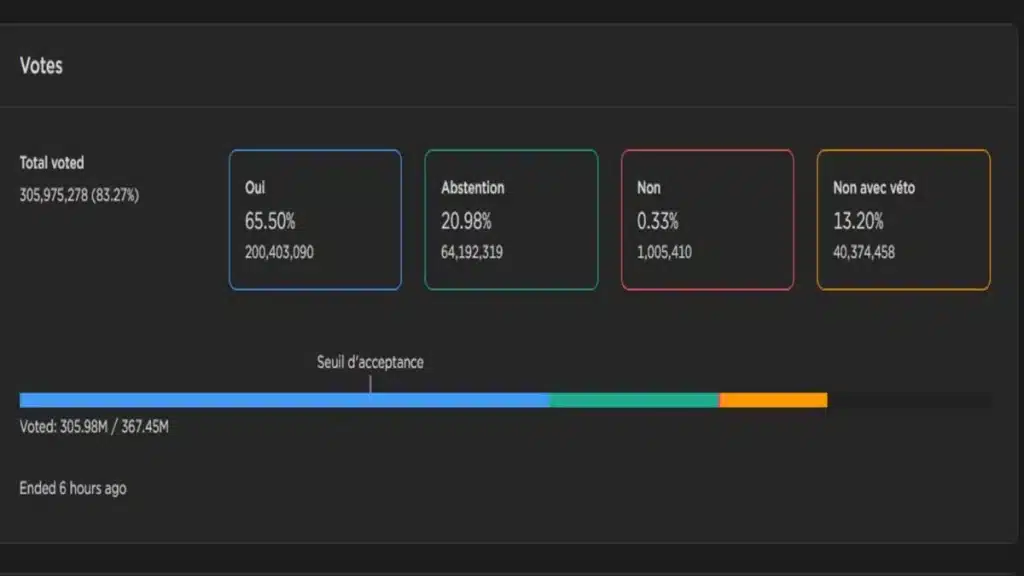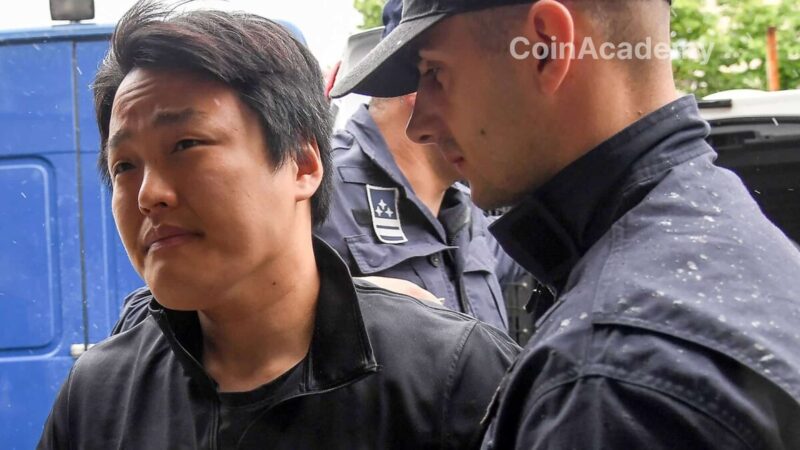The tragic descent into hell of the Terra Luna ecosystem should come to an end. Indeed, proposal n°1623 has just been accepted by the community with 65.50% of positive opinions. On the other hand, 20.98% of voters abstained while 13.20% voted no with a veto.
For some days now, a debate has been going on between the Terra Foundation and a part of the community. This ideological opposition is about the definition of a fork.
According to some, the proposal that has just been accepted is a hard fork. However, Terra’s official twitter contradicts this theory. According to them, a hard fork necessarily implies the preservation of the history of the old chain. However, here the proposal provides for the creation of a new blockchain.
Factually, when LUNA 2.0 is launched on 27 May 2022, two things will happen. First, the old blockchain will be renamed Terra Classic (LUNC). Secondly, a new blockchain will be created with the creation of a genesis block (LUNA).
The main consequence of this distinction is at the level of Dapps. Indeed, applications will have to migrate to the new blockchain, but will not be natively included in the new blockchain.
Terra wants to reward LUNA holders with an airdrop
The proposal includes the distribution of a massive airdrop to reward the ecosystem’s faithful. However, the distribution system seems to contain major inconsistencies. In concrete terms, two categories will be targeted by this allocation:
UST and LUNA holders before the depeg
UST and LUNA holders after the depegThe problem with this choice is that it does not only reward members of the Terra ecosystem, but also speculators who did not necessarily participate in the development of Luna. These criticisms are legitimate, but they worry some commentators in the sector. They want to warn about the lure of gain that could lead unsophisticated investors to rush into the old blockchain.

Terra encourages developers to join its ecosystem
Terra believes in the value of its future ecosystem. In fact, part of the airdrop will be used to reward developers of key Terra Classic applications. In addition, the desire to preserve Terra’s application ecosystem and its hundreds of developers leads the foundation to put a large part of the token distribution towards the developer community.
There are two main reasons for this decision by the foundation. It wishes to provide an urgent margin of manoeuvre for the developers of Dapps on Terra. This strategy should align the interests of developers with the long-term success of the ecosystem.
The proposal elaborates on the different areas covered by the term “essential applications”. Without being exhaustive, it lets us know that developers of infrastructure, DEX, wallets, bridges or stablecoins will be covered by this term.
These application developers will receive the different allocations in several ways:
0.5% of the total offer will be distributed immediately after the launch of the network to developers. They must commit to returning the funds if the product is not delivered within one year
1.5% of the total supply will be used to align the interests of individual developers over time
8% of the total supply will reward developers with a share of the revenue from the mining programmeAll developers who wish to benefit from these allowances will be required to indicate their support for the new blockchain on their social networks.
The Terra ecosystem now has a real strategy following the UST depeg and the collapse of the Luna price. It remains to be seen whether this proposal will restore the enthusiasm around this ecosystem and whether trust with the community can be restored.




